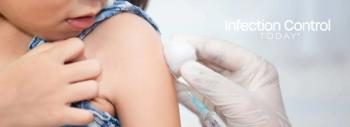
Have You Recovered From COVID-19, or Just Survived?
The additive effects of long COVID-19 with repeat infections, combined with the long-term persistence of long COVID-19 systems, does not bode well for the United States’ workforce. N95 masks, vaccines, boosters, and improvements in ventilation are keys to prevention.
Two of the greatest misinformation sound bites about COVID-19 are that once you leave a hospital, you have recovered, and if you have not been hospitalized, you have “mild” disease. These misstatements have had profound negative effects regarding our goals for vaccine effectiveness and implementation of prevention strategies.
What these statements do not consider are the long-term disabling effects of long COVID-19, a condition which appears to be occurring all too frequently. According to the
The incidence of long COVID-19 developing in COVID-19 patients varies greatly between papers. A
A report by
The
The young have been observed to have a greater incidence of long COVID-19 than the elderly. This is not necessarily because they have a propensity to develop the disease, but because they are less likely to be vaccinated and boosted.
Repeated COVID-19 infections do occur and have been occurring with increased frequency. We are approaching our 3-year pandemic anniversary, and few would expect natural immunity to last this long with preexposure to the same variant. Unfortunately, with the frequent emergence of immune escape variants, such as Omicron and BA4.6, reinfections commonly occur. Boosters and vaccines give a degree of protection, but for high-risk individuals and the elderly, boosters are presently being administered every 5 months.
With the high infectivity and mutation rates of the new variants, we are all going to become infected with SARS-CoV-2. The main questions are how severe will the infections be, and how many times will one become infected?
A
Pamela Brown: “I've had recurring infections. Both times I've had COVID[-19] were not fun. Symptomatic both times.” On quoting an article in The New Yorker, Ms. Brown stated: “…that means many of us could get COVID[-19] 10 times or more in our lifetimes. “On asking if this was an accurate guess or projection, Dr. Anthony Fauci replied: “I think he said it, or she said it very well. It's really just a guess, and you really can't tell.”
Unfortunately, damaging long COVID-19 can also occur with repeated infections and the
Vaccines are important in mitigating long COVID-19. Hastie et al, reported that people vaccinated pre-COVID-19 were 42 to 24 percent less likely to report persistent problems in smell, taste, hearing, appetite, balance, confusion, concentration, anxiety, and depression. A large National Institutes of Health study researching COVID-19 to Enhance Recovery (RECOVER) found that pre-COVID-19 vaccination
Simon et al, reported that unvaccinated individuals given a vaccination within 4 weeks after an acute infection
Ventilation is also key in stopping airborne pathogens. At a recent
To stop the spread of highly infectious
What can infection preventionists do? First, stop referring to patients who have left the hospital as “recovered.” They need to be counseled to the possibility of persistence of their present symptoms and possible emergence of new ones. COVID-19 is a multi-system disease and can affect multiple organs of the body with
Above all, we must realize the pandemic is not over. Our work has just begun.
Newsletter
Stay prepared and protected with Infection Control Today's newsletter, delivering essential updates, best practices, and expert insights for infection preventionists.






